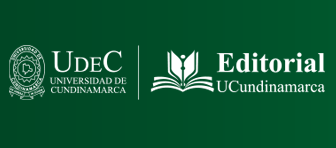Files
Download Full Text (20.5 MB)
Description
Esta cartilla, creada por el Grupo de Investigación PROSAFIS de la Universidad de Cundinamarca, presenta los resultados del proyecto Aproximación a la ecología de orquídeas nativas en el ecosistema hacienda Betania con proyección a su conservación, manejo y producción. Se destaca la orquídea Rodriguezia granadensis, adaptada a forofitos (phorophytes) de cítricos y guayabos, representando el 83,3 % de los individuos observados. Predominó la fase vegetativa (fenología) durante todo el período, con más floración y cápsulas en épocas lluviosas, sincronizando su fase reproductiva con el régimen de lluvias. En las raíces se encontró el hongo endófito (endophyte) Rhizoctonia en todas las muestras, presente en todas las partes de las raíces evaluadas. Este estudio contribuye a la conservación y valoración de las orquídeas epífitas (epiphytes) nativas.
DOI
https://doi.org/10.36436/9789585195226
ISBN
978-958-5195-22-6
Publication Date
6-28-2022
Publisher
Sello Editorial Universidad de Cundinamarca
City
Fusagasugá
Keywords
Orquídeas, Forófitos, Fenología, Endofitos, Conservación, Epífitas
Disciplines
Botany | Forest Biology | Other Forestry and Forest Sciences | Other Plant Sciences
Recommended Citation
Gil Clavijo, Arlette Ivonne; Moreno Lopez, Jenny Paola; and Banda Sánchez, Laguandio del Cristo, "Contribución a la conservación de la orquídea Rodriguezia granadensis (Lindl.) Rchb.f. en la hacienda Betania (Fusagasugá, Colombia)" (2022). Ciencias Agropecuarias. 1.
https://repositorioctei.ucundinamarca.edu.co/agropecuarias/1

Included in
Botany Commons, Forest Biology Commons, Other Forestry and Forest Sciences Commons, Other Plant Sciences Commons



Comments
This booklet, created by the PROSAFIS Research Group of the University of Cundinamarca, presents the results of the project Approach to the ecology of native orchids in the Hacienda Betania ecosystem with projection to its conservation, management and production. The orchid Rodriguezia granadensis stands out, adapted to phorophytes of citrus and guava trees, representing 83.3% of the individuals observed. The vegetative phase (phenology) predominated during the whole period, with more flowering and capsules in rainy seasons, synchronizing its reproductive phase with the rainfall regime. In the roots, the endophyte fungus Rhizoctonia was found in all samples, present in all parts of the roots evaluated. This study contributes to the conservation and valuation of native epiphytic orchids (epiphytes).